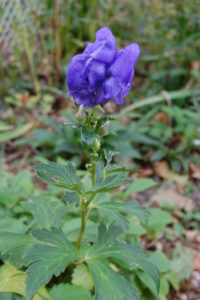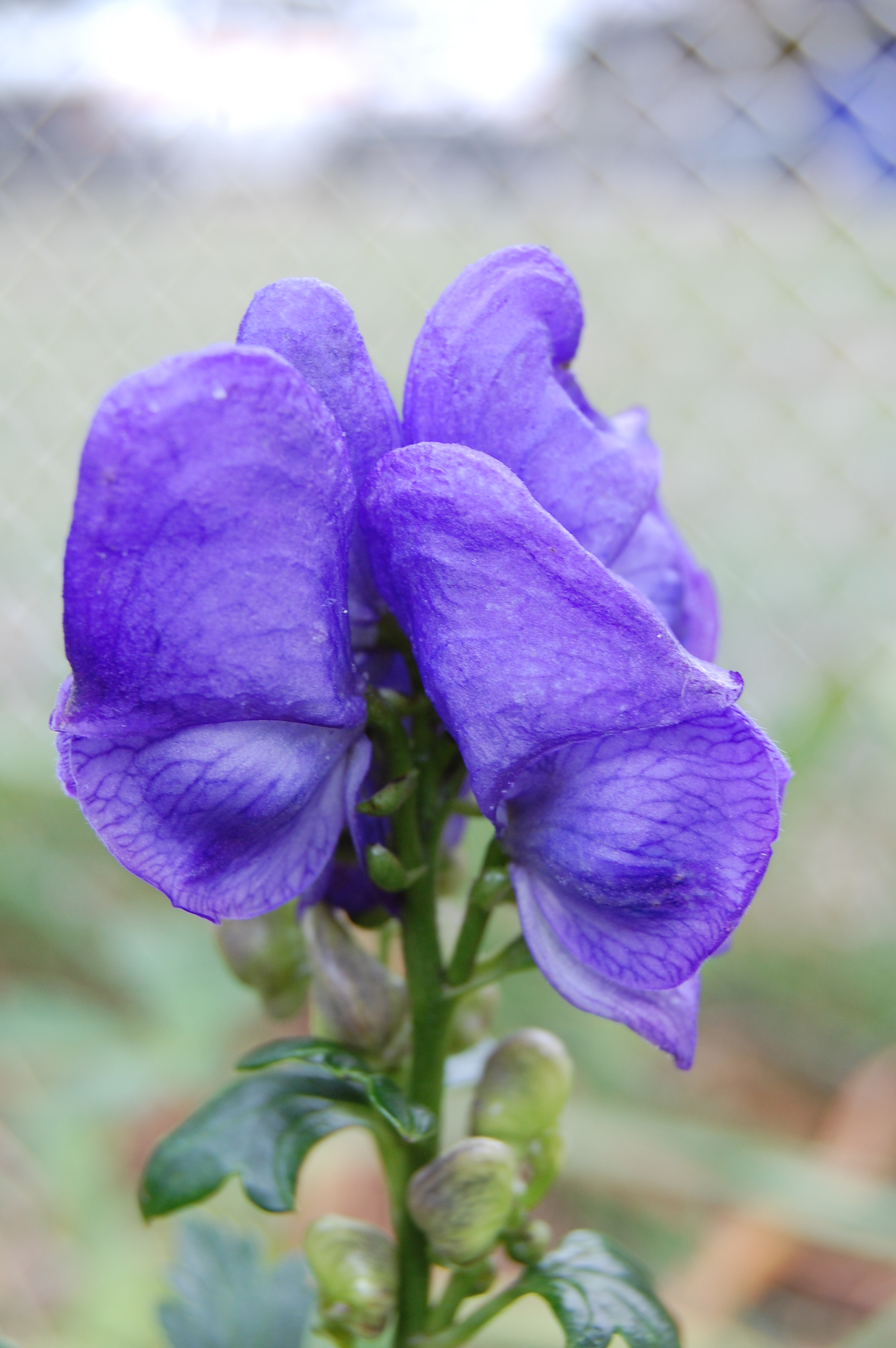 Monkshood (Aconitum napellus), also known as wolfsbane, is not just poisonous for wolves. It contains a neurotoxin, aconitine, that can kill humans and other animals. All parts of the plant are poisonous. You should wear gloves when handling it and wash your hands afterwards. When grown in your garden, be sure to keep small children and pets away from it. Deer will also stay away. Butterflies are attracted to it.
Monkshood (Aconitum napellus), also known as wolfsbane, is not just poisonous for wolves. It contains a neurotoxin, aconitine, that can kill humans and other animals. All parts of the plant are poisonous. You should wear gloves when handling it and wash your hands afterwards. When grown in your garden, be sure to keep small children and pets away from it. Deer will also stay away. Butterflies are attracted to it.
Historically, the poison from monkshood has been used in hunting wolves, bears and even whales. Unfortunately, it has also been used in warfare. The tips of soldiers’ spears were dipped in poison to hasten the deaths of their foes.
Despite being poisonous, monkshood has been used medicinally in Chinese, Japanese and Ayurvedic medicine. It is also mentioned as a poison in Greek and Roman records.
Monkshood gained its name from the shape of its flower which resembles the hood on a monk’s habit. It is a perennial plant that is native to the northern hemisphere and is hardy from zones 4 through 8. The plants die to the ground in the fall. Monkshood will tolerate full sun, but prefers partial shade. It likes rich, moist soil so keep it well-watered. Full grown specimens are anywhere from 3 to 5 feet tall. When grown in partial shade, the plants need staking. Bloom time is late summer/early fall. The flowers are blue and borne on stalks. Newer cultivars can be white or bicolor, blue and white.
Monkshood is usually propagated by division. Dig them up in the fall or spring and divide them gently. The roots are brittle and break easily. Unlike most perennials, they don’t need to be divided regularly which is fortunate because they don’t like having their roots disturbed.
Growing from seed is difficult. They should be sown directly into your garden in the fall, early winter or early spring. Plant the seeds where you want them to grow because the plants don’t like being transplanted. Be patient. Seeds can take 1 to 2 years to germinate. If you prefer to start your seeds indoors, they will need a period of cold stratification to mimic the cold weather of winter. Start your seeds 10 weeks before your last frost. Cold stratify them in your refrigerator for 3 weeks then place the container on a shady windowsill. Germination should occur in 4 weeks or more. You can transplant your seedlings into your garden after your last frost. Space them 12 to 24 inches apart.

